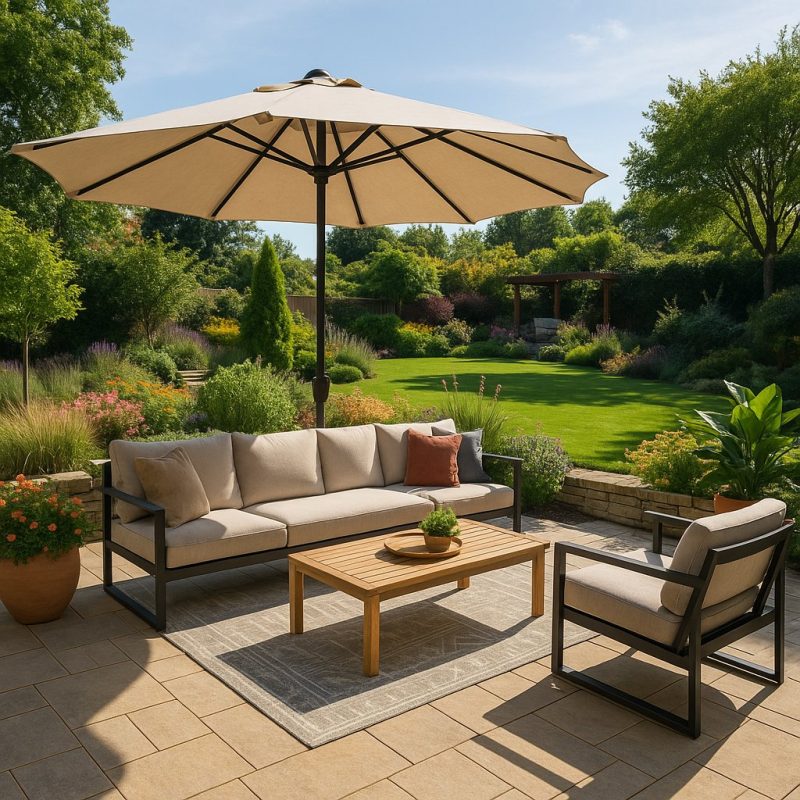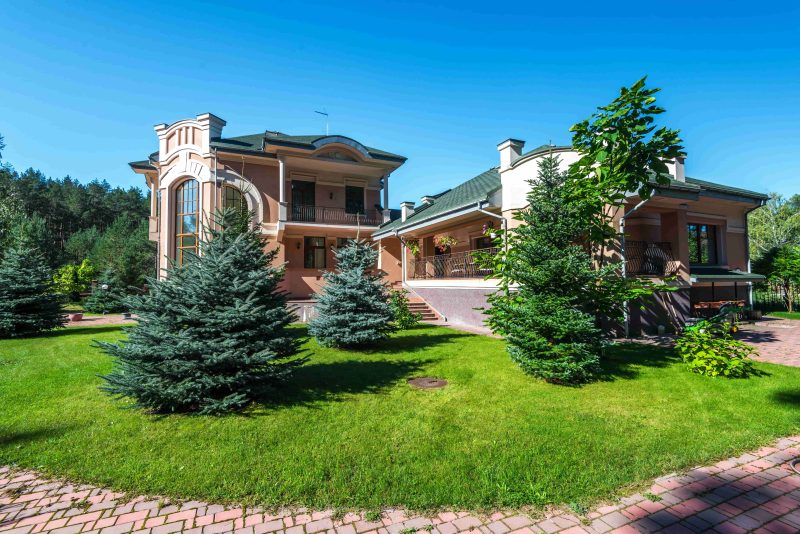Luxury living is no longer defined solely by opulence and grandeur; it has evolved to incorporate sustainability and environmental consciousness. Modern luxury home exteriors exemplify this shift, seamlessly integrating eco-friendly elements into their designs. From energy-efficient technologies to sustainable materials, these homes showcase how elegance and ecological responsibility can coexist harmoniously. This article delves into the key eco-friendly elements that are redefining luxury home exteriors in the modern era.
The Rise of Eco-Conscious Luxury
In recent years, sustainability has become a cornerstone of modern design, particularly in high-end residential architecture. Homeowners and designers alike are recognizing the importance of creating spaces that respect the environment while maintaining their aesthetic appeal. Luxury homes are now embracing green technologies, renewable materials, and energy-efficient solutions to align with a global movement toward sustainability.
Eco-friendly luxury exteriors are not just a trend; they represent a long-term commitment to responsible living. By reducing energy consumption, minimizing waste, and integrating natural elements, these homes contribute to a healthier planet while offering unparalleled comfort and style.
Key Eco-Friendly Elements in Luxury Home Exteriors
1. Green Roofs
Green roofs, also known as living roofs, are a hallmark of sustainable luxury exteriors. These roofs are covered with vegetation, providing insulation, reducing urban heat islands, and improving air quality. In addition to their environmental benefits, green roofs add a natural aesthetic to the home, blending architecture with nature.
2. Solar Integration
Solar panels have become a staple of eco-friendly design, and modern luxury homes are incorporating them in innovative ways. Instead of traditional bulky panels, these homes use sleek solar shingles or transparent solar glass that seamlessly integrate into the roofline. These advancements ensure that the home generates renewable energy without compromising its architectural elegance.
3. Sustainable Materials
The choice of materials plays a significant role in eco-friendly exteriors. High-end homes now feature reclaimed wood, recycled metals, and locally sourced stone. These materials not only reduce the carbon footprint of construction but also add character and uniqueness to the home’s design. Bamboo, a fast-growing and renewable resource, is also a popular choice for decking and cladding.
4. Energy-Efficient Windows and Insulation
Energy-efficient windows with low-emissivity (low-E) coatings are a key feature of sustainable luxury exteriors. These windows reduce heat transfer, keeping interiors cool in summer and warm in winter. Paired with high-performance insulation, they minimize energy consumption while enhancing comfort.
5. Rainwater Harvesting Systems
Rainwater harvesting is an eco-friendly solution that luxury homes are increasingly adopting. These systems collect and store rainwater for irrigation, reducing the need for municipal water. Modern designs integrate these systems into the landscape, often using aesthetically pleasing cisterns or underground tanks.
6. Permeable Paving
Permeable paving materials, such as porous concrete and gravel, allow water to pass through the surface, reducing runoff and promoting groundwater recharge. These materials are both functional and visually appealing, making them ideal for driveways, patios, and walkways.
7. Native Landscaping
Landscaping with native plants is a sustainable practice that enhances the beauty of luxury exteriors. Native plants require less water, fertilizer, and maintenance, making them an environmentally friendly choice. Incorporating drought-tolerant species, such as succulents and ornamental grasses, further reduces water consumption.
8. Efficient Outdoor Lighting
LED lighting has revolutionized outdoor illumination, offering energy efficiency without sacrificing style. Solar-powered garden lights, motion sensors, and smart lighting systems are becoming standard features in eco-friendly luxury homes. These solutions not only conserve energy but also create stunning nighttime aesthetics.
9. Natural Ventilation and Shading
Architectural features such as louvered shutters, pergolas, and overhangs enhance natural ventilation and shading. These elements reduce the reliance on air conditioning while adding depth and texture to the exterior design.
10. Water Features with Eco-Friendly Systems
Modern water features, such as fountains and ponds, now incorporate energy-efficient pumps and filtration systems. By recirculating water and using solar power, these features provide a tranquil ambiance without excessive resource consumption.
Balancing Luxury and Sustainability
Luxury homes are often perceived as extravagant, but modern designs prove that elegance and sustainability can coexist. The integration of eco-friendly elements not only benefits the environment but also enhances the home’s value and livability. Sustainable features, such as energy-efficient systems and renewable materials, reduce operational costs while creating a healthier living environment.
Conclusion
Eco-friendly elements in modern luxury home exteriors are not just about enhancing the aesthetic appeal of a property; they represent a fundamental shift in how we approach architectural design, sustainability, and responsible living. The integration of these features demonstrates that luxury and environmental stewardship are not mutually exclusive but can complement each other beautifully.
Modern homeowners are no longer content with extravagance alone—they seek homes that reflect their values, lifestyles, and commitment to preserving the environment. Eco-friendly exteriors have become a statement of progressive living, showcasing how innovative design can harmonize with nature. From green roofs that reduce heat islands to solar panels that generate clean energy, these features ensure that luxury homes contribute positively to their surroundings.
The use of sustainable materials such as reclaimed wood, bamboo, and recycled metals further elevates the appeal of eco-conscious luxury. These materials not only reduce environmental impact but also add character and uniqueness to every design. Landscapes adorned with native plants, water-saving irrigation systems, and permeable paving show how functionality can meet beauty in a way that respects natural ecosystems.
Moreover, technological advancements in outdoor lighting, water features, and energy-efficient windows reflect the intersection of innovation and elegance. Homeowners can now enjoy the comforts of luxury living while significantly reducing their carbon footprint. These advancements point to a future where technology continues to empower us to live more sustainably without compromising style or convenience.
Eco-friendly luxury exteriors also set a new standard for architectural resilience. Features like rainwater harvesting systems and natural ventilation not only improve sustainability but also enhance the durability and comfort of the home. This balance between functionality and environmental consciousness ensures that these homes remain valuable assets for generations.
The shift toward sustainability in luxury exteriors is more than a trend—it’s a necessity that resonates with the ethos of contemporary living. These designs are not only beautiful but also intelligent, reflecting a mindful approach to building that considers the well-being of both people and the planet. As architects, designers, and homeowners continue to embrace eco-friendly practices, the definition of luxury itself is evolving to include the principles of harmony, responsibility, and innovation.
Looking to the future, we can expect even more groundbreaking developments in eco-friendly design. Emerging technologies like carbon-negative materials, advanced renewable energy systems, and AI-driven sustainability planning will redefine the possibilities for luxurious yet responsible homes. For those who value the intersection of comfort, elegance, and sustainability, these homes represent the pinnacle of modern living.
Ultimately, eco-friendly elements in luxury exteriors are about more than just creating beautiful spaces—they are about creating a legacy. These homes are a testament to the idea that true luxury is about leaving a positive impact, crafting environments that inspire, nurture, and sustain. As we move forward, these homes will stand not just as symbols of wealth but as beacons of a brighter, greener future where beauty and responsibility coexist in perfect harmony.







